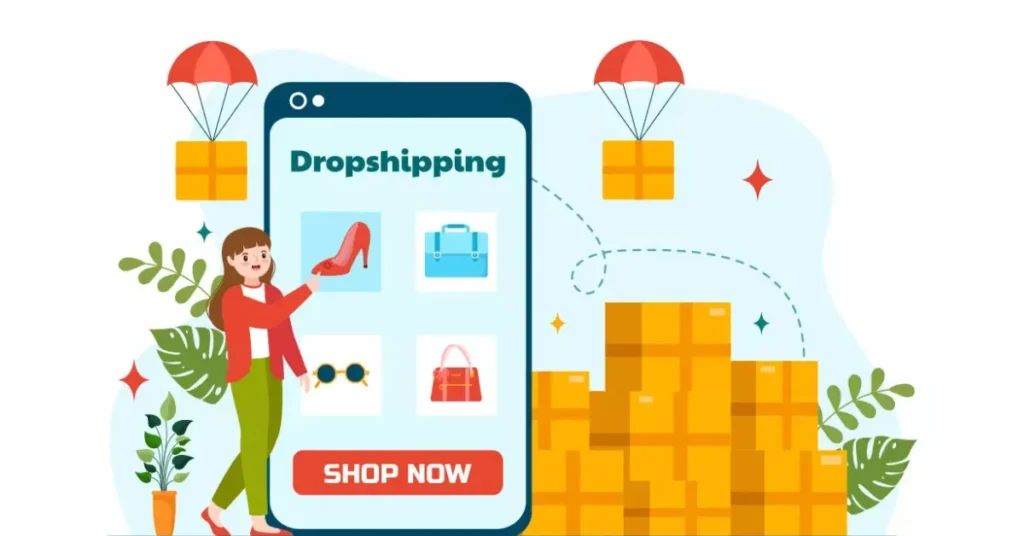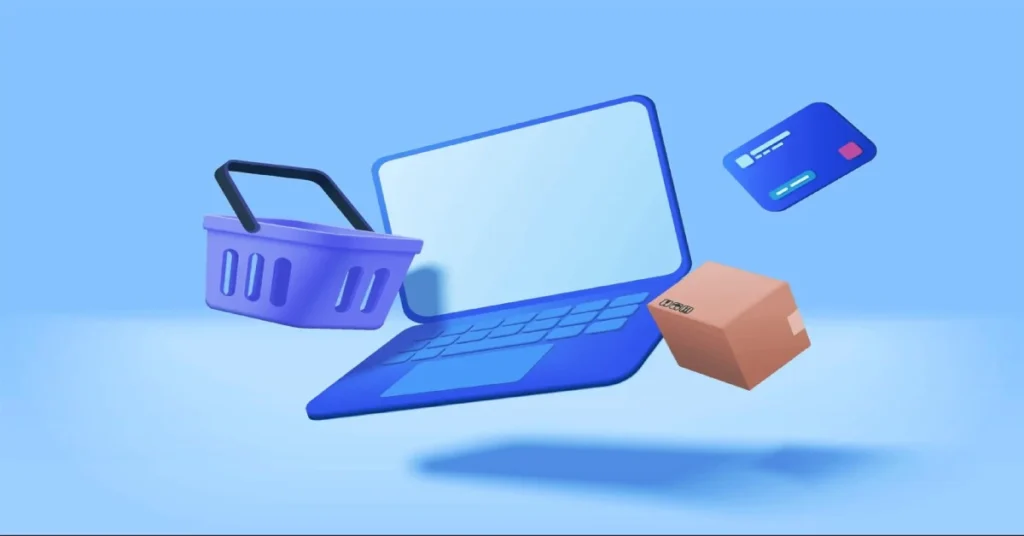Introduction
The best ecommerce platform for your dropshipping business defines your path to success. Choosing the right one sets the stage for smooth operations, happy customers, and healthy profits. As a US small business owner, I know you want to build something strong and lasting. This guide helps you navigate the options. I will share insights on what makes a platform shine for dropshipping, especially here in the United States.
Dropshipping has exploded in popularity, and for good reason. It lets you sell products without holding inventory. This reduces startup costs and minimizes risks. The global dropshipping market is experiencing significant growth, projected to reach $351.8 billion by 2024, a substantial increase from $284.6 billion in 2023. North America makes up a substantial portion of this, accounting for 31.5% of the global dropshipping market in 2023. (Oberlo, May 2024). This growth shows the immense opportunity waiting for you.
But how do you pick the right platform? It’s not just about features. It’s about finding a partner that truly understands the unique needs of a dropshipping business. I will focus on what matters most to you: clear costs, reliable US suppliers, simple legal steps, and effective ways to find your customers.
Understanding Your Needs: What to Look for in an E-commerce Platform

Before I compare specific platforms, let’s look at what your dropshipping business really needs. Think of these as your essential tools.
Core Dropshipping Functionality
Your platform must handle the basics of dropshipping with ease. During our discussion about managing costs, I mentioned how crucial apps are for dropshipping operations. These tools, from product sourcing to marketing, truly shape your efficiency and bottom line. To help you navigate this vital area, I’ve put together a comprehensive guide detailing “Apps For Dropshipping: The Essential Apps You Need in 2025“, offering an in-depth look at the top choices and how they can supercharge your business.
- Supplier Integrations: This is non-negotiable. You need direct connections to dropshipping apps and marketplaces. These apps, like Oberlo, DSers, Spocket, Zendrop, Printful, and Printify, automate product importing, order fulfillment, and inventory updates. Without them, you manually manage everything. Imagine updating hundreds of products and orders by hand!
- Automated Order Fulfillment: Once a customer buys, the platform should send the order details to your supplier automatically. This saves you time and prevents errors. It also includes tracking information that goes back to your customers.
- Inventory Sync: Products sell out. Suppliers run low on stock. Your platform needs to update your store’s inventory in real-time. This prevents you from selling items you cannot fulfill, avoiding unhappy customers and canceled orders.
Ease of Use and Setup
As a small business owner, you wear many hats. You need a platform that saves you time, not one that requires a coding degree.
- User-Friendly Interface: Look for drag-and-drop builders. These allow you to design your store visually without writing any code. You can focus on your brand, not on complex technical details.
- Minimal Coding Required: Many platforms offer templates and themes. You can customize them without touching the code. This speeds up your setup.
- Quick Launch Capability: You want to start selling fast. A good platform lets you set up your store and list products within days, not weeks or months.
Cost-Effectiveness and Transparency: Unpacking the Real Price Tag
Many articles talk about monthly fees. But the true cost of running a dropshipping business goes much deeper. Let’s explore what you pay for.
- Platform Fees: These are your monthly subscriptions. They vary from around $29 to $300 or more per month, depending on the features and sales volume. For instance, Shopify’s Basic plan starts around $39/month if billed monthly, or $29/month if billed annually. BigCommerce’s Standard plan is about $39/month or $29/month annually. (Spocket, AppScenic, 2025).
- Transaction Fees: Pay close attention to these. Some platforms charge an extra percentage on each sale if you use an external payment gateway like PayPal or Stripe instead of their own. Shopify, for example, charges 2% on sales on its Basic plan if you don’t use Shopify Payments. This adds up. If you sell $5,000 worth of products in a month, that’s an extra $100 in fees.
- Essential App Costs: Dropshippers rely on apps for product sourcing, marketing, and customer service. While some apps have free tiers, many necessary ones come with monthly subscriptions. Dropshipping apps like Spocket can cost $24/month for a basic plan. (Spocket, 2025). Marketing apps or SEO tools might add another $20-$100+ per month. These are ongoing costs you must factor into your budget.
- Theme/Template Costs: Platforms offer free themes. But premium themes, which offer more customization and a polished look, can cost anywhere from $100 to $400 (one-time).
- Hidden Fees: Watch out for unexpected charges. Some platforms might charge for advanced analytics, specific security features, or exceeding certain bandwidth limits. Always read the fine print.
“A common mistake new dropshippers make is underestimating the total monthly expense, I learned quickly that transaction fees and app subscriptions can eat into profits if you don’t track them carefully.”
-Sarah, a successful US-based dropshipper.
Imagine you choose a platform with a low monthly fee, say $29. But you also pay 2% in transaction fees on all sales and $50 for essential apps. If you hit $2,000 in monthly sales, your real cost is $29 (platform) + $40 (transaction fees) + $50 (apps) = $119 per month. This is far more than just the advertised platform fee.
Scalability and Growth Potential
Your dropshipping business might start small. But you want it to grow. The right platform should handle that growth seamlessly.
- Handling Increased Traffic and Orders: A platform should maintain fast loading speeds and smooth checkout processes even with many visitors. You don’t want your store to crash when a product goes viral.
- Flexible Plan Upgrades: Can you easily move to a higher plan as your sales increase? Does the platform offer more features or lower transaction fees on higher tiers?
- API Access for Advanced Integrations: As your business grows, you might need custom tools or specialized software. A platform with robust API (Application Programming Interface) access allows developers to connect your store with almost any other service.
Marketing and SEO Features: How to Attract Your US Customers
Getting eyes on your products is vital. Your platform should help you reach your ideal customers.
- Built-in SEO Tools: Search engine optimization (SEO) helps customers find your store through Google. Look for tools that let you easily edit meta titles, descriptions, and product URLs. These help search engines understand your content.
- Email Marketing Integrations: Email remains a powerful sales tool. Your platform should connect with popular email marketing services like Mailchimp or Klaviyo. This allows you to send automated emails for abandoned carts, order confirmations, and promotions. Omnisend, Klaviyo, and Mailchimp are popular choices for e-commerce integration. (Encharge.io, May 2025).
- Social Media Integrations: Social commerce is a major trend. Over 50% of US social media users are social buyers in 2024. (Backlinko, May 2025). Can you easily link your products to Facebook Shops, Instagram Shopping, or TikTok Shop? Direct selling on social platforms can boost sales.
- Analytics and Reporting: You need to understand your sales, customer behavior, and marketing effectiveness. Good platforms offer clear dashboards and reports to track your performance.
Payment Processing and Security
Customers need to feel safe when they buy from you.
- Variety of Payment Gateways: Offer popular payment options like Stripe, PayPal, Apple Pay, and credit cards. This caters to diverse customer preferences.
- SSL Certificates: An SSL certificate encrypts data between your customer’s browser and your store. This is crucial for security and trust. Most good platforms include this automatically.
- Fraud Protection: Some platforms offer built-in tools to detect and prevent fraudulent orders. This protects your business from chargebacks and losses.
Customer Support
When something goes wrong, you need help.
- Availability: Look for 24/7 support through live chat, phone, or email.
- Resource Library/Knowledge Base: A good platform provides extensive guides and tutorials. You can often find answers to your questions quickly without waiting for support.
Customization and Branding
Even with dropshipping, your brand matters.
- Theme Options and Design Flexibility: You want a professional-looking store that reflects your brand. Choose a platform with many customizable themes.
- Ability to Upload Custom Logos, Fonts, Branding Elements: Make your store uniquely yours. Consistent branding builds trust and recognition.
Top E-commerce Platforms for Dropshipping: My Recommendations

Now, let’s dive into the platforms themselves. I will highlight their strengths and weaknesses for dropshipping, keeping US small businesses in mind.
Shopify: The Dropshipping Powerhouse
Shopify is often the first name that comes up in dropshipping. It’s incredibly popular, powering 28% of US online businesses in November 2024. (Oberlo, November 2024).
- Pros:
- Best-in-Class Dropshipping App Ecosystem: Shopify App Store has thousands of apps specifically for dropshipping. Oberlo, DSers, and Zendrop are tightly integrated. This makes product sourcing and fulfillment easy.
- User-Friendly Interface, Quick Setup: You can launch a good-looking store in a day or two. Its drag-and-drop editor is very intuitive.
- Excellent Scalability: Shopify handles businesses from small startups to large enterprises. You can easily upgrade plans as you grow.
- Robust Marketing and Sales Tools: Shopify offers excellent built-in SEO features. It also integrates with virtually every major marketing tool for email, social media, and advertising.
- Strong Support: They offer 24/7 customer support via phone, chat, and email.
- Cons:
- Transaction Fees: If you don’t use Shopify Payments, you pay a fee (e.g., 2% on the Basic plan) on every sale. This can cut into thin dropshipping margins.
- App Costs Can Add Up: While many apps are essential, their monthly subscriptions can increase your total expenses significantly.
- Best For: New dropshippers, those who value ease of use and dedicated dropshipping features, and businesses planning rapid growth.
- US Dropshipping Specifics: Shopify integrates seamlessly with apps like Spocket and Printful, which have strong connections to US-based suppliers. This makes sourcing and shipping within the US very efficient.
WooCommerce (WordPress): The Flexible & Cost-Efficient Choice
WooCommerce is a free plugin for WordPress. It gives you immense control if you are comfortable with WordPress. It’s a strong contender, used by 14% of US online stores. (Oberlo, November 2024). When I talked about the real cost of platforms like Shopify and WooCommerce, I touched on how much they truly impact your budget. If you want a deeper dive into the specific financial differences between these two giants, I wrote an entire blog post breaking down “How Much Does WooCommerce Cost Is It Cheaper Than Shopify” that explores every expense, helping you see which one aligns best with your financial strategy.
- Pros:
- Open-Source, High Customizability: Since it’s built on WordPress, you have full control. You can customize nearly anything with themes and plugins.
- No Transaction Fees (Only Payment Gateway Fees): WooCommerce itself doesn’t charge per-transaction fees. You only pay your payment gateway (e.g., Stripe, PayPal). This can save you money compared to some Shopify plans.
- Strong SEO Potential: WordPress is known for its excellent SEO capabilities. WooCommerce leverages this, allowing for deep optimization.
- Large Community Support: A vast community of developers and users means you can find help and resources easily.
- Cons:
- Requires More Technical Expertise: You manage your hosting, security, and updates. This needs more technical know-how than a hosted platform like Shopify.
- Can Be More Complex to Set Up Initially: Getting everything running (hosting, WordPress, WooCommerce, dropshipping plugins) takes more steps.
- Reliance on Third-Party Plugins: While many plugins exist, you might need several for core dropshipping functions, and these can sometimes conflict.
- Best For: Small businesses with some technical comfort, those seeking ultimate control and customization, and budget-conscious entrepreneurs willing to invest time.
- US Dropshipping Specifics: Many dropshipping plugins for WooCommerce, like AliDropship or integrations for Spocket and Printful, work well with US-based suppliers.
BigCommerce: Built for Scalability and Features
BigCommerce aims for businesses that plan to scale. It offers strong built-in features, reducing reliance on many apps.
- Pros:
- Strong Built-in Features: BigCommerce includes many features that you might need apps for on other platforms. This reduces your reliance on add-ons.
- No Transaction Fees (Regardless of Payment Gateway): Like WooCommerce, BigCommerce does not charge additional transaction fees. This is a big plus for profitability.
- Designed for Scalability: The platform handles high sales volumes without issues.
- Excellent Multi-Channel Selling Capabilities: Easily sell on Amazon, eBay, and social media directly from your BigCommerce store.
- Cons:
- Can Be More Complex for Beginners: Its interface is robust, but might feel overwhelming to new e-commerce sellers compared to Shopify.
- Price Tiers Based on Annual Sales Volume: As your sales grow, your monthly fee automatically increases to a higher plan. This can be a surprise for some businesses.
- Best For: Small businesses planning significant growth, those with diverse product catalogs, and established dropshippers looking for a comprehensive solution.
- US Dropshipping Specifics: BigCommerce connects with leading dropshipping apps that source from US suppliers. Its robust features support efficient fulfillment from various locations.
Wix & Squarespace: The User-Friendly Website Builders (with Dropshipping Capabilities)
Wix and Squarespace are known for their ease of use and beautiful design templates. They have added e-commerce features, including dropshipping options. Wix Stores holds 23% of the US market share, and Squarespace holds 16%. (Oberlo, November 2024). While this guide offers a solid overview of platforms like Shopify, Wix, and Squarespace for dropshipping, your needs might lean more heavily on design flexibility or content creation. To help you make a truly tailored decision, I’ve created a comprehensive comparison, “Shopify vs Wix vs Squarespace: Which One Offers the Best in 2025“, which delves into their unique strengths and weaknesses beyond just e-commerce, ensuring you pick the platform that perfectly matches your vision.
- Pros:
- Extremely Easy to Use, Beautiful Templates: If design and simplicity are your top priorities, these platforms shine.
- All-in-One Solutions: They include hosting, design tools, and e-commerce features in one package.
- Affordable Entry Point: Their basic e-commerce plans are often quite budget-friendly.
- Cons:
- More Limited Dropshipping Integrations: While they offer some dropshipping apps, their ecosystems are not as rich or specialized as Shopify’s.
- Less Scalable for High-Volume Dropshippers: They may not handle very high traffic or complex inventory management as smoothly as dedicated e-commerce platforms.
- Fewer Advanced E-commerce Features: You might find limitations if you need advanced reporting, complex discount rules, or highly specific integrations.
- Best For: Absolute beginners, those focused on aesthetics, and very small-scale or niche dropshipping.
- US Dropshipping Specifics: They offer basic integrations with dropshipping apps that may connect to US suppliers. This works well for getting started with dropshipping on a simple, visually appealing site.
Other Notable Platforms
- Ecwid: This is a shopping cart solution you can add to any existing website. It’s great if you already have a blog or a service-based site and want to add products. Ecwid powers 4% of US online stores. (Oberlo, November 2024).
- Printful/Printify: If you plan to sell only print-on-demand products (t-shirts, mugs, etc.), these platforms offer direct integration and simplified fulfillment. They are ideal for creative entrepreneurs.
Crucial Considerations for US Small Business Dropshippers

Now, let’s explore some areas often overlooked in general platform reviews. These points are vital for your success as a US dropshipper.
Understanding Dropshipping Costs: Beyond the Monthly Fee
This is where the real clarity comes in. Many guides mention monthly fees, but the total investment for a thriving dropshipping business runs deeper. Let’s look at real examples.
- Example Cost Breakdowns:
- Scenario 1: Starting with Shopify (Low Volume)
- Shopify Basic Plan: $39/month (or $29/month annually)
- Oberlo/DSers (basic plan): Free to $29.90/month (for more product imports)
- Spocket (Starter plan for US/EU products): $24/month
- Essential Apps (e.g., product reviews, SEO optimizer): $20-$50/month
- Total Estimated Monthly Cost (excluding sales tax and product costs): Roughly $113 – $143 per month. This doesn’t include marketing spend.
- Scenario 2: Building with WooCommerce (DIY Approach)
- Web Hosting (good quality): $10-$30/month (e.g., SiteGround, Bluehost)
- Domain Name: $10-$15/year (one-time annual fee)
- Premium Theme (optional one-time): $50-$100 (WooCommerce has many free themes too)
- AliDropship (one-time payment for plugin): $89
- Essential Plugins (e.g., SEO, security, email marketing integration): $30-$80/month
- Total Estimated Monthly Cost (excluding sales tax and product costs): Roughly $40 – $120 per month (after initial setup costs).
- Scenario 1: Starting with Shopify (Low Volume)
- Impact of Transaction Fees on Margins: Let’s say you sell a product for $30, and your cost is $15. Your gross profit is $15.
- If your platform charges a 2% transaction fee, that’s $0.60 per sale. Your profit drops to $14.40.
- If you sell 100 of those items a month, that’s an extra $60 in fees. Over time, these small amounts add up significantly, especially when dropshipping profit margins typically range from 10% to 30% (Doofinder, 2024).
- Long-Term App Investments: Many new dropshippers are surprised by how much they spend on apps. They’re not just one-time purchases. They become recurring expenses. Factor them in when planning your budget.
Leveraging US-Based Dropshipping Suppliers & Faster Shipping
This is a game-changer for US small businesses. While global sourcing offers vast product choices, using US-based suppliers brings distinct advantages.
- Why Source from the US?
- Faster Shipping: This is the biggest benefit. Customers in the US expect quick delivery. Orders from US suppliers often arrive in 2-7 business days, compared to 2-4 weeks (or more) from overseas. Faster shipping leads to happier customers and fewer complaints.
- Easier Returns: Handling returns from international suppliers can be a headache. US suppliers generally have simpler return processes.
- Higher Customer Satisfaction: Customers prefer transparent shipping times and reliable delivery. This builds trust and encourages repeat purchases.
- Reduced Customs Issues: You avoid potential customs delays, duties, or import taxes common with international shipments.
- Key US-centric dropshipping Marketplaces/Apps:
- Spocket: This platform focuses on connecting you with suppliers in the US and Europe. They often offer vetted products and faster shipping times.
- Zendrop: Designed specifically for dropshippers, Zendrop offers products from US and European suppliers with quick shipping. They also provide features like custom branding.
- Printful/Printify: If you’re selling custom t-shirts, mugs, or other print-on-demand items, these platforms have large networks of US-based printers.
- Wholesale2B / SaleHoo: These are directories that list various dropshipping suppliers, many of whom are based in the US.
- How to Integrate US Suppliers with Each Platform: Most popular dropshipping apps mentioned above (Spocket, Zendrop, Printful, Printify) have direct integrations with Shopify, WooCommerce, and BigCommerce. You typically install their app from your platform’s app store. For example, installing the Spocket app on Shopify lets you easily import products and automate orders from US suppliers.
- Managing Customer Expectations: Always be clear about shipping times on your product pages and checkout. If you mix US and international suppliers, mention the different delivery windows. “Transparency builds trust,” I always say.
Navigating US Sales Tax and Legalities for Dropshippers
This area confuses many new entrepreneurs. But it’s essential for your business’s longevity.
- Sales Tax Nexus Explained Simply: In the US, sales tax rules depend on “nexus.” Nexus means a significant connection to a state.
- Physical Presence Nexus: This means having a physical location (office, warehouse, or employee) in a state.
- Economic Nexus: Many states now require you to collect sales tax if you meet certain sales thresholds (e.g., $100,000 in sales or 200 transactions) in that state, even without a physical presence. (Shopify, 2025).
- Example: If you run your business from California but sell over $100,000 worth of goods to customers in Texas, you might have an economic nexus in Texas and need to collect sales tax there.
- Collecting Sales Tax:
- If you have nexus in a state, you must register with that state’s tax department.
- Platforms like Shopify have built-in tax tools (Shopify Tax) that help you calculate and collect the correct sales tax at checkout based on the customer’s location. WooCommerce also has plugins for sales tax automation.
- Business Registration: You need to formally register your business in the US. This could be a Sole Proprietorship, LLC, or Corporation. An LLC (Limited Liability Company) is a popular choice for dropshippers, as it separates your personal and business liabilities. LLC registration costs vary by state, often a few hundred dollars (e.g., $50-$500 one-time fee).
- Product Liability: As a dropshipper, you sell products you don’t physically handle. But you can still be liable for defective or unsafe products.
- The Consumer Product Safety Commission (CPSC) provides resources for small businesses on safety requirements.
- Always work with reputable suppliers. Read their reviews. Order samples to check quality yourself.
- Be aware of product recalls. If a product you sell gets recalled, you must remove it from your store and may need to notify customers. (Shopify Help Center).
Disclaimer: Tax and legal rules are complex and constantly change. Always consult a qualified legal and tax professional for specific advice tailored to your business. This article provides general information, not legal or tax counsel.
Marketing Strategies for Dropshippers on Your Chosen Platform
Your platform helps you sell, but you must drive traffic. Here’s how to make your marketing shine.
- SEO Best Practices:
- Product Page Optimization: Write unique, detailed product descriptions. Include keywords customers use to search. Optimize product images.
- Keyword Research: Find out what terms your potential customers type into Google. Use tools like Google Keyword Planner to find these terms.
- Paid Advertising:
- Facebook & Instagram Ads: These are excellent for visual products. Target specific demographics, interests, and behaviors. You can create “lookalike audiences” based on your existing customers.
- Google Shopping Ads: These display your products directly in Google search results. They are highly effective for capturing buyers with strong purchase intent.
- TikTok Shop/Ads: This platform is growing fast for e-commerce. As of 2024, social commerce is a major trend. Over 50% of US social media users are social buyers. (Backlinko, May 2025). Leverage short video content to showcase products.
- Email Marketing Automation:
- Abandoned Cart Flows: Send automated emails to customers who add items to their cart but don’t complete the purchase. This recovers lost sales.
- Post-Purchase Sequences: Send thank you emails, order updates, and product recommendations.
- Promotions: Announce sales, new arrivals, or special offers.
- Platforms like Klaviyo and Omnisend integrate deeply with Shopify, WooCommerce, and BigCommerce, letting you set up sophisticated email campaigns.
- Building Brand Trust: Even as a dropshipper, you build a brand.
- Customer Reviews: Encourage customers to leave reviews. Display them prominently.
- Excellent Customer Service: Respond quickly to inquiries. Handle issues gracefully. Your reputation matters.
- Professional Store Design: A clean, well-designed store inspires confidence.
When to Consider Scaling or Switching Platforms
Your business grows. Your needs change. Knowing when to move to a different platform or upgrade your current one is smart.
- Signs You’re Outgrowing Your Current Platform:
- Your current platform struggles with high traffic spikes, causing slow loading times or crashes.
- You need advanced features that your current platform doesn’t offer, even with apps.
- Your transaction fees are becoming too high on your current plan.
- You constantly hit limits on products, bandwidth, or staff accounts.
- Migration Strategies: Moving platforms takes planning. Many services specialize in e-commerce migrations. They help transfer products, customer data, and order history.
- Exploring Advanced Solutions: If you hit millions in sales, you might consider Shopify Plus (enterprise-level Shopify) or a highly customized WooCommerce build. These offer dedicated support and custom features for large-scale operations.
Real-World Insights & Tips for US Dropshippers
My advice for you as a US small business owner, based on my experience helping many entrepreneurs succeed:
- The Importance of Niche Selection: Don’t try to sell everything. Focus on a specific niche. This makes your marketing easier and helps you stand out. For example, a niche like “eco-friendly pet supplies made in the USA” targets a specific audience.
- Customer Service is Key: Since you don’t handle physical products, your customer service becomes even more critical. Respond to questions quickly. Be honest about shipping times. Build trust. Your platform choice can impact this: some platforms offer better built-in customer support tools or integrations.
- Start Lean, Grow Smart: Don’t overspend on expensive features or apps you don’t need when starting. Begin with a basic plan and essential tools. Invest more as your business proves profitable.
- Embrace Feedback: Listen to your customers. Their feedback helps you improve products, shipping, and service.
Success Story Snippet: “When I started my dropshipping store for personalized gifts, I chose Shopify,” says Emily, a US-based entrepreneur. “The direct integration with Printful and easy marketing tools made it simple to launch. I focused on building a strong brand and running targeted Facebook Ads. Now, I process hundreds of orders a month, all fulfilled by US suppliers. The key was finding a platform that supported my goal of fast shipping and quality products for my US customers.”
Conclusion: Making Your Informed Decision
Choosing the best e-commerce platform for your dropshipping business is a big step. It defines your efficiency, profitability, and growth potential. I have walked you through the critical factors: core features, true costs, US-specific supplier advantages, legal considerations, and effective marketing.
Here’s a final checklist to guide your decision:
- Does it integrate smoothly with your preferred dropshipping suppliers, especially US-based ones?
- Does it fit your complete budget, considering monthly fees, transaction costs, and app subscriptions?
- Is it user-friendly and easy for you to manage day-to-day?
- Does it offer the scalability you need for future growth?
- Does it provide robust marketing and SEO tools to attract your target audience?
Your success in dropshipping relies on making an informed choice. Take your time. Research each platform. Many offer free trials. Test them out. Picture your business running on each one. Then pick the platform that empowers you to build the thriving e-commerce venture you envision. I know you can do it.





